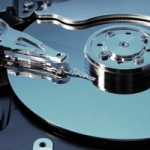Directive Blogs
Hard Drive Crash Course
When can a single dust particle lead to thousands of dollars worth of damage (or more)?
The answer is when your data isn't backed up. Today we're going to talk about just how fragile your data's very existence can be.
We love this analogy. Imagine driving down the highway, you are going twice the speed limit. Suddenly a brick gets tossed out of a passing car into your grill. This would do some very severe damage to your car. Let's scale that down a bit to the size of your hard drive.
Most hard drives spin at 7200 RPM. That means every single second, your hard drive's patter spins 120 times. In a single drive, there are usually multiple platters, usually ranging from 3 to 10. These are essentially thin, round disks, each with two tiny mechanical 'heads' between them. Think of a record player and needle, but the needle never actually touches the surface. These platters and the magnetic heads are so delicate that if they were to come in contact with each other, it would destroy your hard drive. Fortunately, spinning 120 times per second keeps a nice cushion of air between the platter and the head.
A single piece of dust in an environment designed to be so perfect and precise can bump into the head and send it crashing down onto the platter. This sends more dust and debris onto the platter, demolishing your drive.
One piece of dust! Fortunately, hard drives are designed to be protected against dust with internal safeguards, but it isn't impossible for this to happen. If your data isn't backed up often, you are only waiting for the day that you lose it all.
Want to learn more about protecting your data? Contact us today to talk about the ways you can ensure that your infinitely valuable (and infinitely delicate) data is safe and secure.


